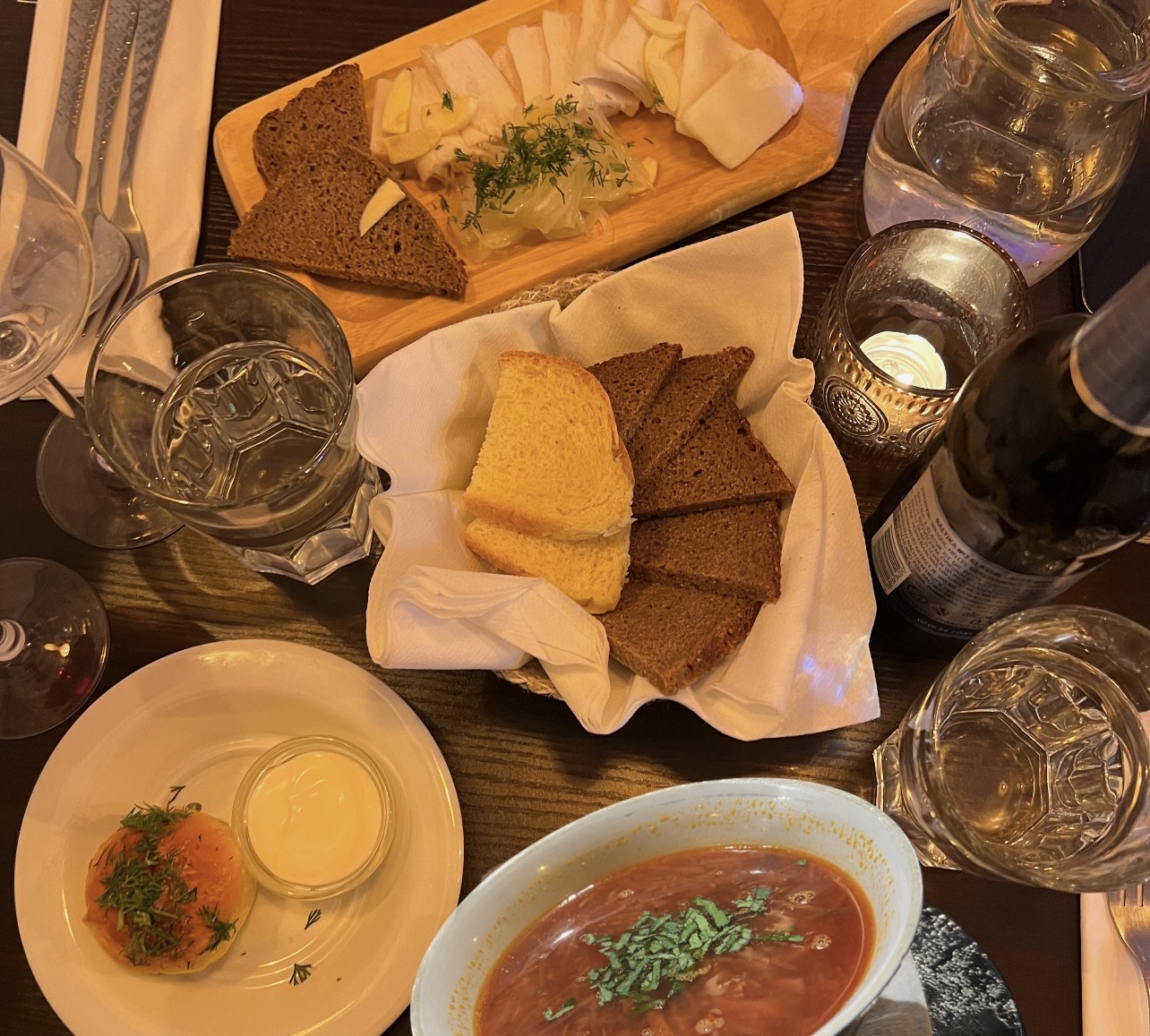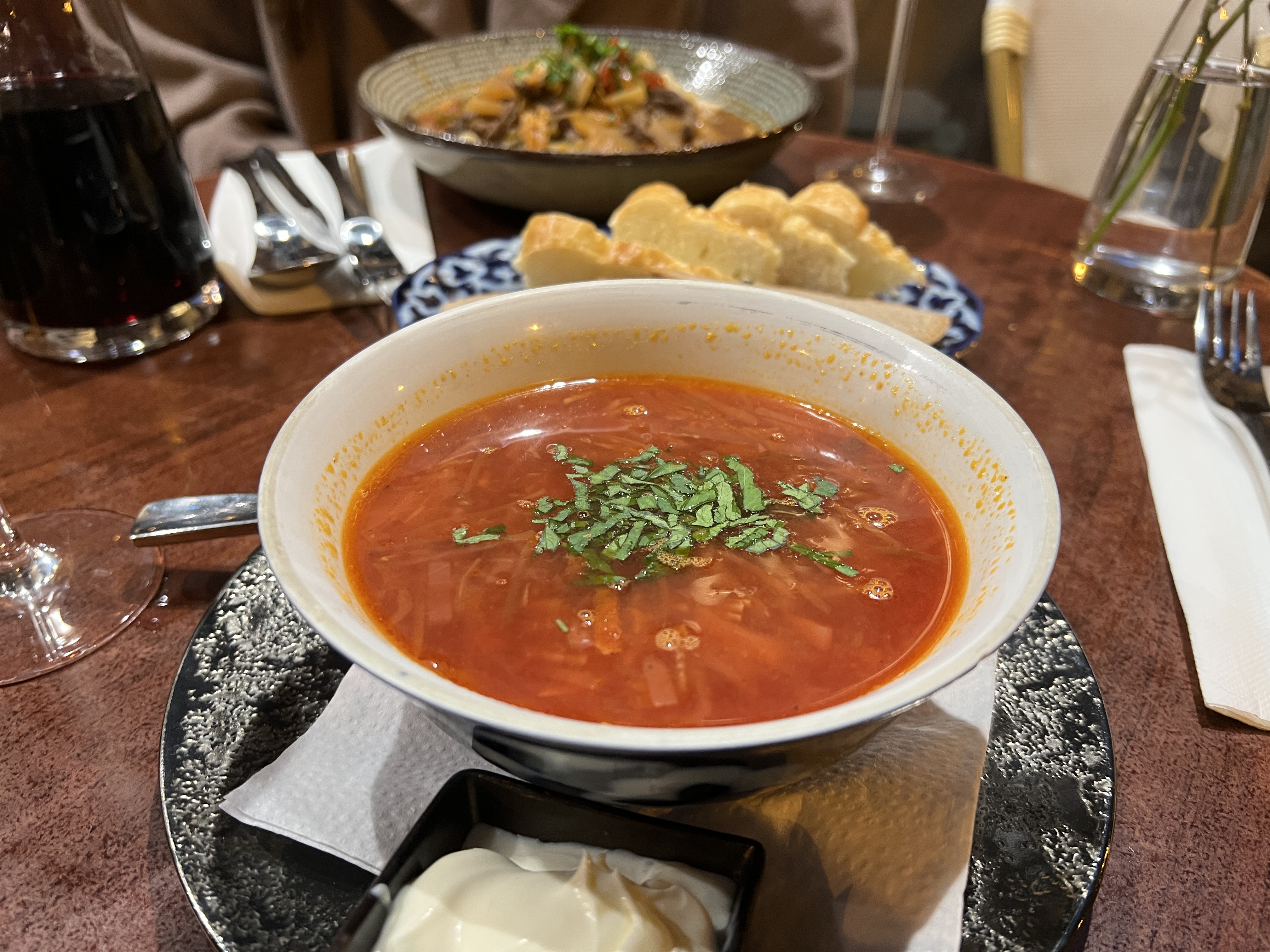Eurasian Restaurants in Paris

Paris - the 'City of Light', with its enchanting evening strolls and Belle Époque architecture, offers an array of exquisite dining experiences. Globalization's reach into various corners of the world has fostered a rich tapestry of culinary traditions within Paris.
The cuisine of the diverse cultures within the collapsed Soviet Union presents a unique fusion of flavors and preparation methods, each interpreted in its distinctive style. Despite its somewhat underground status in terms of popularity or social influence, Parisian restaurants provide a unique perspective on classic dishes across different neighborhoods and price ranges, attracting aficionados of Eastern cuisine.
Russian cuisine draws inspiration from Eastern Europe, Central Asia, and Siberia, resulting in a harmonious blend of diverse tastes. Hearty and nourishing, Russian dishes are a culinary prerequisite. The harsh winter months dictate the use of ingredients such as grains, potatoes, root vegetables, dairy products, mushrooms, and meats. The emphasis on preserving flavors through fermentation, pickling, and slow cooking methods ensures a satisfying yet refined dining experience.
Pelmeni, akin to an Eastern European twist on ravioli, gyoza, or dumplings, is a testament to the region's culinary creativity. Piroshki, a compact pie filled with meats or vegetables, adds another layer of culinary delight. Borscht, a signature soup associated with Russia, Ukraine, and Poland, sparks debates over its origins. Comprising beets in a beef/pork broth, each nation puts its unique spin on this historic soup, making every restaurant's interpretation a distinct experience. While Borscht is as ubiquitous as onion soup in a bistro, Parisian restaurants offer diverse dishes, from luxurious delicacies in the 7th arrondissement to tempting takeout options in the 9th. Russian cuisine is sure to captivate its audience. Here are four of my favorite Eurasian restaurants in Paris:
1. Kalinka
Situated at the intersection of the 9th and 10th arrondissements, Kalinka beckons with a diverse array of classical Eastern European dishes and delectable desserts.
The ambiance is enriched by live music of Russian motives, skillfully played by a pianist, complemented by the charm of Slavic interior decorations. Kalinka takes the client into a traditional and festive environment. Spread across two floors of seating, this restaurant offers a cozy setting, suitable for a casual apéritif or a more substantial meal. Indulge in the timeless classics of Russian and Ukrainian cuisine at Kalinka, featuring iconic dishes such as Borscht, Pelmeni, Kievan chicken, and Shashlik.
Enhance your dining experience with a carefully curated selection of Georgian wines, including the rich Kindzmarauli or the bold Saperavi red wine. The menu also boasts a tempting €20 option, comprising Borscht and a choice of main dish, providing an enticing opportunity for a complete and satisfying meal. Maintaining a mid-range price point without compromising quality, Kalinka stands as an inviting gateway to the world of Russian culinary delights.
2. Petrossian
Bearing the name of the caviar it sells, Petrossian's oldest shop opened its doors in the 1920s. The opulent restaurant, with a central focus on seafood, showcases five different varieties of caviar, alongside their signature salmon and oysters. The menu creatively reimagines these products in various shapes and forms. The new restaurant, inaugurated in 2018, provides a high-end dining experience.
Additionally, the five boutiques offer a selection of luxurious delicacies for purchase or delivery. Despite its elevated costs, Petrossian ensures top-of-the-line quality and exquisite design in its seafood cuisine, making it an ideal choice for creating enduring memories.
3. Pirojki Bar
Pirojki Bar is located in the heart of the 9th arrondissement, situated right in front of La Folie Bergère. The place offers a mixed approach to its services, with a kiosk integrated into a classical Parisian building providing takeaway services. This includes hot pirojki and pastries or pelmeni in bulk, available at a reasonable price for you to cook yourself at home.
The hand-made quality and affordable pricing of Siberian pelmeni make it a budget friendly and delicious option for those seeking an inflation-friendly meal.
Next door is the proper, sit-down restaurant, offering an expanded menu. Enjoy Zakoiski, two types of traditional soups, seledka, pelmeni, Ukrainian varenikis, Russian, Ukrainian and Uzbec plats, and a signature homemade Medovik and Napoléon for dessert.
As the majority of staff is composed of Ukrainians, their borscht is made with a pork broth, giving it a delicious variation to the traditional soup.
4. Bukhara

Being the most oriental of the restaurants, Bukhara offers a mix of Russian and Uzbek food. The atmosphere engulfs the visitor in an oriental scape.
This restaurant is an excellent opportunity to get in touch with the traditions, tastes and peculiarities of an eastern country like Uzbekistan. The restaurant is named after one of the oldest cities in Central Asia, which flourished in the middle of the desert and decorated it with palaces and minarets. It is also an institution with high ceilings and luxurious chandeliers in the style of Oriental Baroque. On the walls, you can see traditional plates and costumes, photos of residents, and the course of life in Bukhara. On the menu you will find most of the delicious Uzbek national dishes, such as pilaf with chicken or beef, Samsa and manti with various fillings, Lagman, and Khanum.
Familiar names such as Borscht, Pirojki and Boeuf Stroganoff are coupled with Uzbek classics. A variety of classical entrees, salads, and Uzbek raviolis, are followed by select traditional dishes. Manti, being reminiscent of pelemeni, offers a delicous snack, while Plov, a signature rice and lamb dish would not disappoint the client.
All of these restaurants offer delightful services, you really can't go wrong with any of them. No matter which one of them you choose, you will certainly be left speechless by the uniqueness of Eurasian food.





